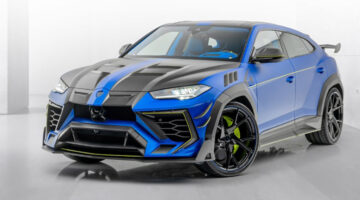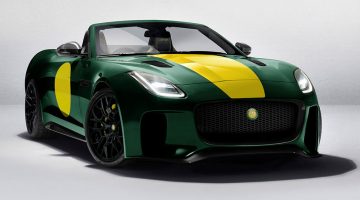crankandpiston.com grabs a quick word with the developers behind Jaguar’s new aluminium monocoque architecture to discuss the new C-X17 SUV concept and the future design direction of the company.
[Not a valid template]‘Anything we can imagine we can create’. Few would deny that Jaguar more than lived up to this new mantra when it unveiled the C-X17 at the Frankfurt Motor Show. Whether they were recoiling, swooning or applauding, the new design study certainly made an impact with Jaguar fans around the world, and crankandpiston.com was particularly impressed when we took the new C-X17 SUV concept for a quick spin in Dubai.
To focus too much on the SUV though would be a mistake. Yes, it’s gorgeous, a risk, and a potential game changer, but the concept itself is not Jaguar’s headline act. That would be the company’s all-new aluminium monocoque architecture, codenamed iQ[Al]. That is Jaguar’s ‘big picture’. That is why the company’s first ever SUV in its 91-year history is just a drop in the ocean compared with what will come along in the next five, ten, fifteen years, so say the men who designed and engineered the new architecture.
“For the first time in the history of Jaguar we’re designing an architecture that will actually span us not just in years but in car types,” explains Ian Callum, Jaguar director of design. “We wanted to give ourselves the range.”
Shortly after we jumped into the rock hard seat, crankandpiston.com had a quick chat with Ian; Graham Wilkins, vehicle engineering manager; and Julian Thomson, director of advance design. These three know more about Jaguar’s aluminium architecture than others with days of Google research behind them could ever hope to, and it’s with that in mind that makes the first question that much easier: how close to blurring the Range Rover lines does the C-X17 get?
“Honestly the products are very, very different,’ Julian begins. “Jaguar has a very unique combination of dynamism, road capability and style and luxury, which is different to Land Rover. So there’s more than enough room for both brands.”
“There’s no intention for the C-X17 in any way to be a copy or a competing vehicle with the Range Rover,” Graham continues. “It’s meant to look like a Jaguar… sorry, it IS a Jaguar” – good save Graham – “and it will drive like a Jaguar too. Part of the reasoning behind C-X17 was to show that the new Jaguar architecture was capable of delivering a wide variety of products.”
Clearly the gentlemen are keen to tilt the conversation away from Solihull and back to their innovative new aluminium philosophy. Having spent three and a half years in development (only one of which was spent on the C-X17 itself), the new architecture is much more than just your basic platform. Modular in design, and therefore scaleable, the new architecture – made from 100 per cent recycled materials, by the by – replaces the set boundaries indicative of traditional platforms yet maintains the rigidity and lightness of its predecessors.
Six separate models on the Jaguar fleet now need not necessarily require six different platforms: a tweak here and a twist there, and one monocoque could easily sustain all six. Rather than focusing on the design of just one or two Jaguars, several can be undertaken simultaneously, and on the same production line. Streamlining the procedure in this way is not only an enormous time saver but also a more efficient use of resources for the Coventry-based outfit. Moreover, this more flexible base consequently allows for a much wider product portfolio. And what better example is there of that than a Jaguar sports crossover?
Story continues on page 2



